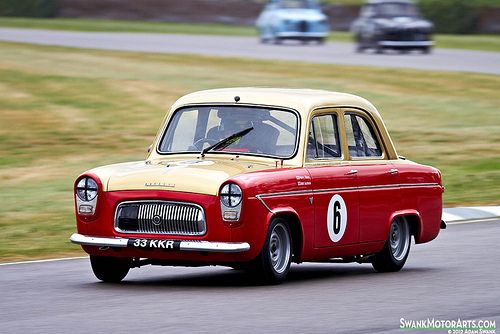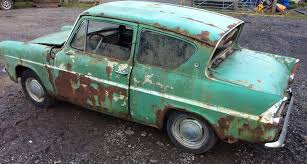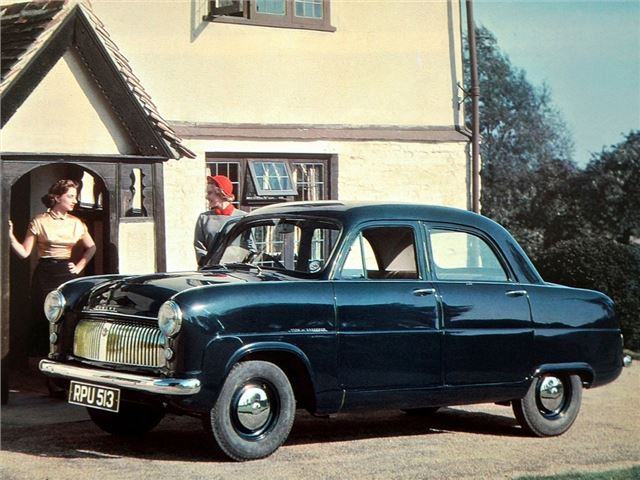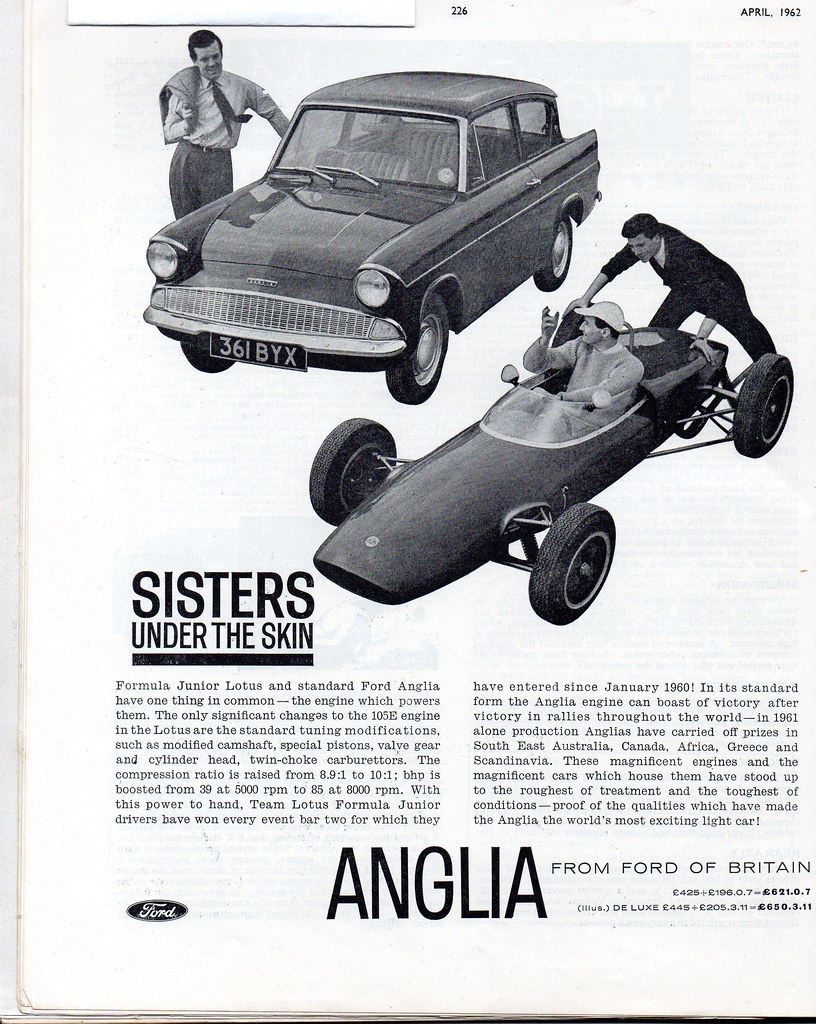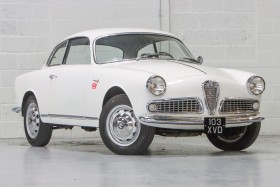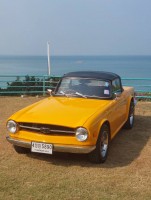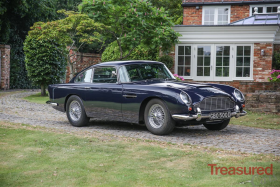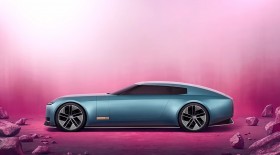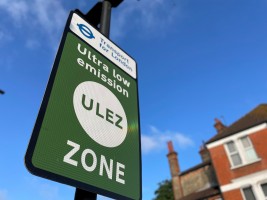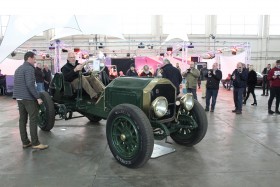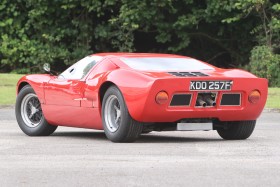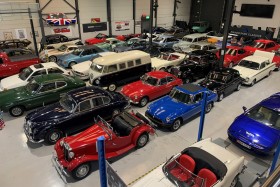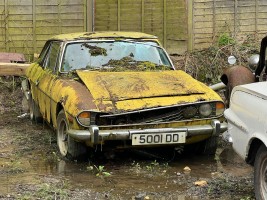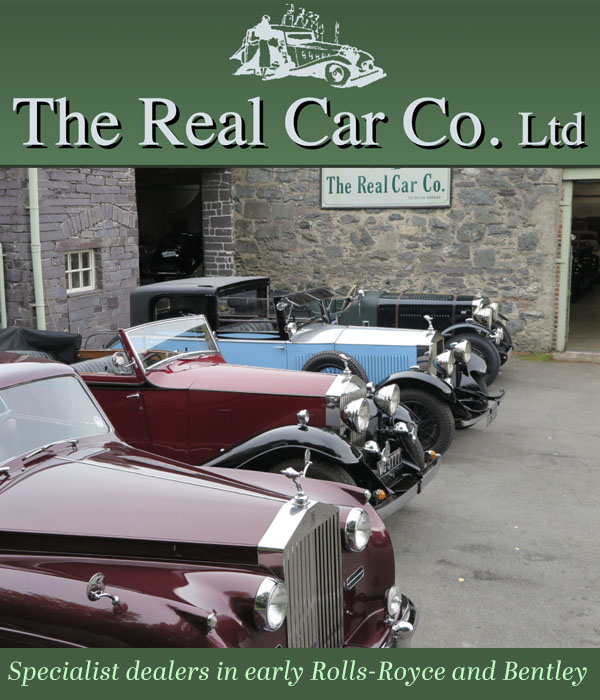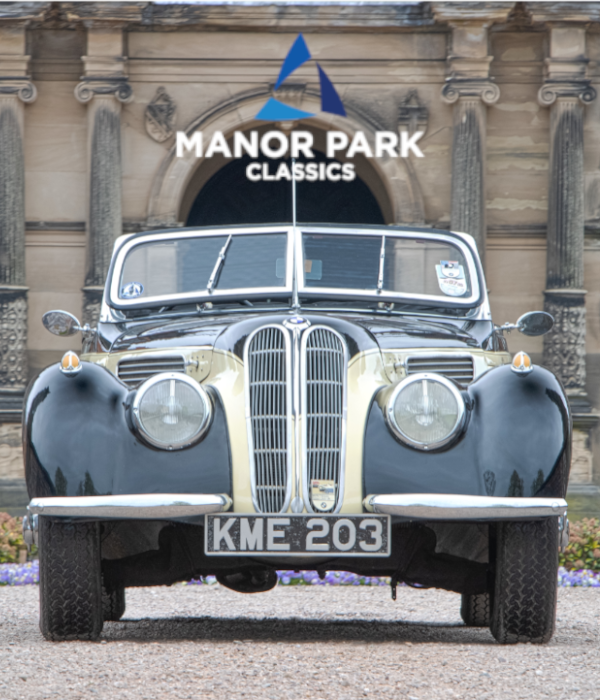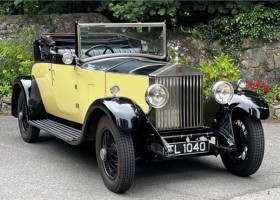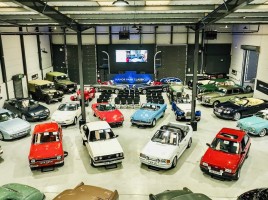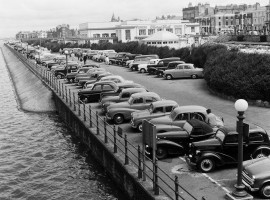the little known perfect prefect
The Ford 107E And What Might Have Been. Apologies to 105E enthusiasts!
By: Terry Burgess Fri, 01 May 2020
Features
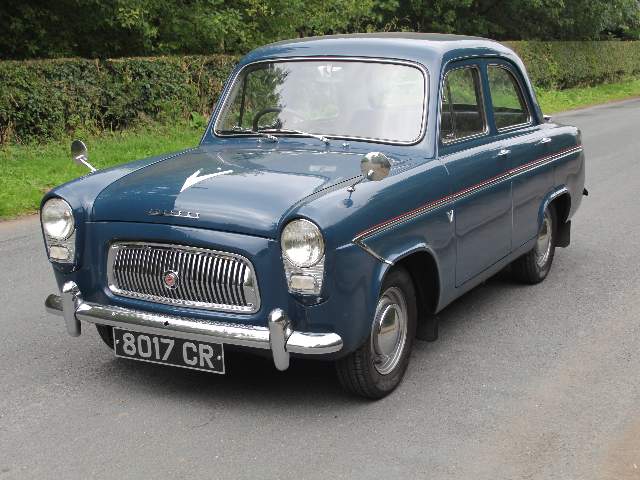
The history of the Ford Motor Company in the UK is quite unlike that of any other British or foreign owned car manufacturer. The first Fords constructed in the UK were Model Ts, assembled from US-made parts at Trafford Park Manchester from 1911 although with locally sourced bodies. Sales rapidly increased. British motorists were enthusiastic about this rugged and inexpensive car from the other side of the 'pond'. By 1919 41% of UK registered cars were Fords, much to the chagrin of domestic manufacturers. However, as sales grew in the lower socio-economic groups and motoring ceased to be the preserve of the very wealthy, the Model T's large bore 3 litre engine, which produced only 20bhp, began to tell against it as the annual road tax, based on its high RAC horsepower rating of 22, was disproportionately high. Cars such as the Austin 7 (7h.p.) and Morris Oxford (11.9h.p.) stole sales away from the Model T at an alarming rate and Ford in Britain gradually declined.
Not until 1932 would there be a Ford designed at Dearborn (USA) specifically for the European market, to be built in a vast, newly constructed factory on the Dagenham marshes on the north side of the River Thames, east of London. It was also built in France and Germany. The new car was the Ford Model Y (8h.p.), a two door saloon with a 933cc sidevalve engine driving through a 3-speed gearbox to the rear axle. Suspension was by transverse leaf springs and four-wheel rod-operated brakes were employed. By the standards of the time, it was a handsome little car and remarkably cheap. In 1935 a simplified version sold for £100, the first car to sell at that price in the UK. There were various developments of that basic design leading up to WWII, including 1172cc (10h.p.) models, with various 2 and 4 door bodies, 'tourers' and commercials. Larger Fords continued to be essentially US models with sidevalve V8 engines.
After WWII Ford continued for a time with pre-war designs, the Anglia E04A, the Prefect E93A and the 3622cc Pilot V8. These were really quite archaic designs, with echoes of the Model T in their engineering, but they were rugged, cheap and well supported by excellent Ford service.
In 1951 Ford in Britain took a giant leap forward with the new Consul (EOTA), a modern slab-sided four door saloon with a unitary body, 1508cc OHV engine, independent, Macpherson strut front suspension and hydraulic brakes. The longer 2262cc 6-cylinder Zephyr was its stablemate, later to be joined by the more luxurious Zephyr Zodiac. These cars were instantly successful. The old, old Anglia and Prefect 'sit-up-and-beg' models continued alongside their jet-age, new siblings for three more years.
In 1954 elements of the old Anglia and Prefect were combined to produce a 'new' model, the old, old Popular 103E, having the old Anglia body/chassis with the old Prefect 1172cc engine. Equipment was extremely basic. However, genuinely new small Fords were introduced at the same time, the 100Es. As with the Consul Zephyr range, these offered a radical departure from the old pre-war designs, being modern-looking unitary construction models with a shape similar to although slimmer than the larger Fords, and with similarly modern braking and suspension. Like the EOTA range, the 100Es had a 3-speed gearbox although with a floor-change rather than column. All Fords continued to use vacuum-operated windscreen wipers which went fast on a trailing throttle but painfully slowly when accelerating or climbing. There were Anglia and Prefect models with 2 and 4 doors and a shorter-bodied van which would also be sold in estate car form as the Escort or the Squire, the latter with fake wood on the sides. The 100E was not so modern under the bonnet where an allegedly brand new engine was to be found. Unlike the old 1172 engine, it had a water pump and adjustable valve clearances, but it was still a long stroke 1172cc sidevalve with old-style white metal big end bearings. Power was up by 20% to 36bhp and the 100E would do 70mph, but fuel economy was markedly inferior to that of other small cars. Nevertheless, the attractive new Fords were well reviewed and sold very well indeed, keenly priced as they were.
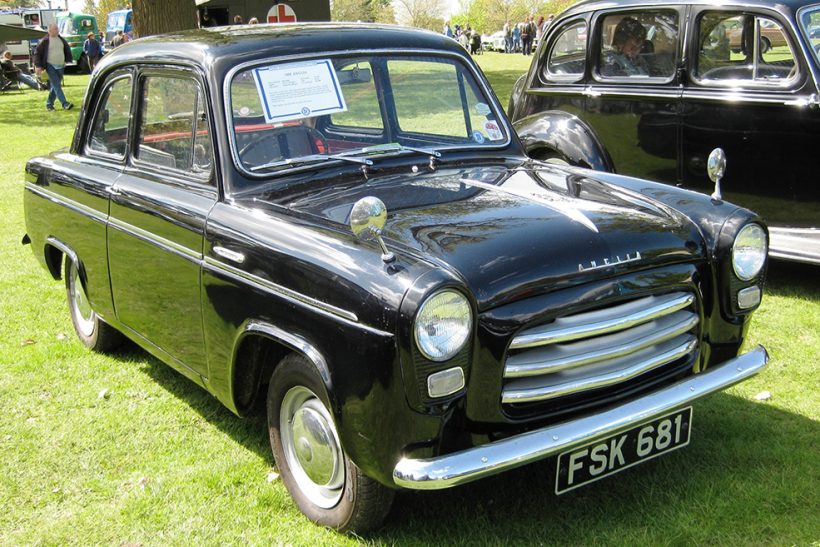
Which brings us to 1959 when everything changed again! There had been more change at the top in 1956 when the Consul, Zephyr and Zodiac Mk2 models were introduced, being larger and more opulently styled with engines increased to 1703cc for the Consul and 2553cc for the Z-cars! This moved the Consul out of the one and a half litre class and created a gap which Ford decided to fill. In a previous article I have examined the product of that decision, the Consul Classic 315.
At the same time, Ford looked ahead and decided also that they could not continue for long with a sidevalve 3-speeder as their only offering in the small-car field. Hence the decision to produce the Anglia 105E from 1959, a car which would be designed alongside the Classic and share major mechanical units with it. The prehistoric 103E 'sit-up-and-beg' Popular would at last be deleted along with its Model T design heritage.
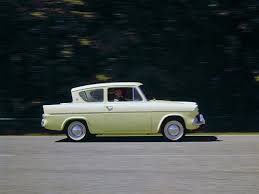
The 100E would not die, however, as the 2-door model would continue for a few more years as the more basic Popular 100E, and the Prefect would continue, although with the new 105E overhead-valve 997cc 39bhp engine and 4-speed gearbox designed for the new Anglia, as the Prefect 107E, but still with vacuum wipers!
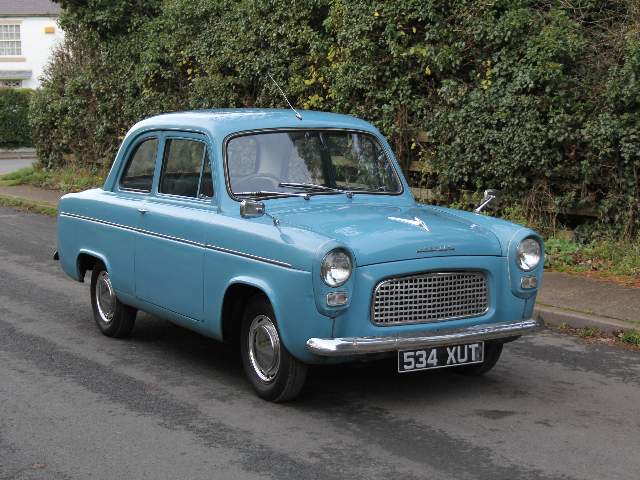
It is at this stage that I will become controversial in getting to the point. I believe that Ford made a major mistake in their product planning at this time. The 100E saloon bodyshell was only 5 years old when it was placed on the sidelines and it was a very good design. It remained a clean and attractive shape, much improved by the enlarged rear window for the 1958 model year. By contrast, the new 105E Anglia was vulgar in appearance and, being no less than 4.5 inches narrower, with space-inefficient over-styling, was comparatively cramped. The interior styling was no less vulgar with a hideous pressed-steel 'dashboard'. Certainly, by the time it was replaced in 1967 , the 105E was grossly out of step with 1960s design trends and acceptable only by virtue of its familiarity. My view is that the 105E Anglia was a completely unnecessary car and a waste of money. The tooling costs for its hideous body would have been far better spent on a wholesale rejuvenation of the 100E range and a really good engine and gearbox for the Classic 315, which should have been produced from 1959, rather than coming to market later than intended in 1961 and receiving a new drivetrain in 1962.
The Prefect 107E was a good car, far better than the Anglia 105E with the single exception of the vacuum wipers, easily remedied. An Anglia 107E would have been just as good. Perhaps it might have had a new front panel, sidelights and grille and new rear light clusters. New colours, better seats and a fresh instrument layout too and perhaps wider track. The spare wheel could have been relocated under the boot floor and a new full length estate model produced, together with longer 5 and 7cwt vans. I envisage this revitalised range continuing into the mid 1960s by which time sportier, larger engined, disc-braked versions could have been offered, courtesy of the Classic 315 parts bin. It might seem sacrilegious to suggest that the 105E should never have been. After all, wasn't it very successful in racing, rallying and other motor sports, and isn't it beloved of Harry Potter fans? Don't worry, nobody would have known. The 107E could have done all of that just as well, if not better. The 105E bodyshell was a strong one if it wasn't rusty, but that was a big IF! The car was ridiculously narrow, presumably to differentiate it sufficiently from the Classic 315, which compromised its ability to corner well and made a difficulty of fitting a pair of Weber DCOE40s under the bonnet, so it wasn't really ideal for anything.
So there you have it. The Anglia 105E was an unnecessary and hideous aberration upon which Ford wasted a great deal of money. The Consul Classic 315 was a beautiful car compromised by inadequate engineering. The Prefect 107E was (apart from those wipers!) the Perfect Prefect and an improved 107E range could have seen Ford of Britain through most of the sixties. I rest my case and wait for the brickbats!
Footnotes
1958 Ford Prefect for sale just £4,995 from Pioneer Automobiles
https://treasuredcars.com/classic_cars_for_sale/details/1958-ford-prefect-classic-cars-for-sale_761



